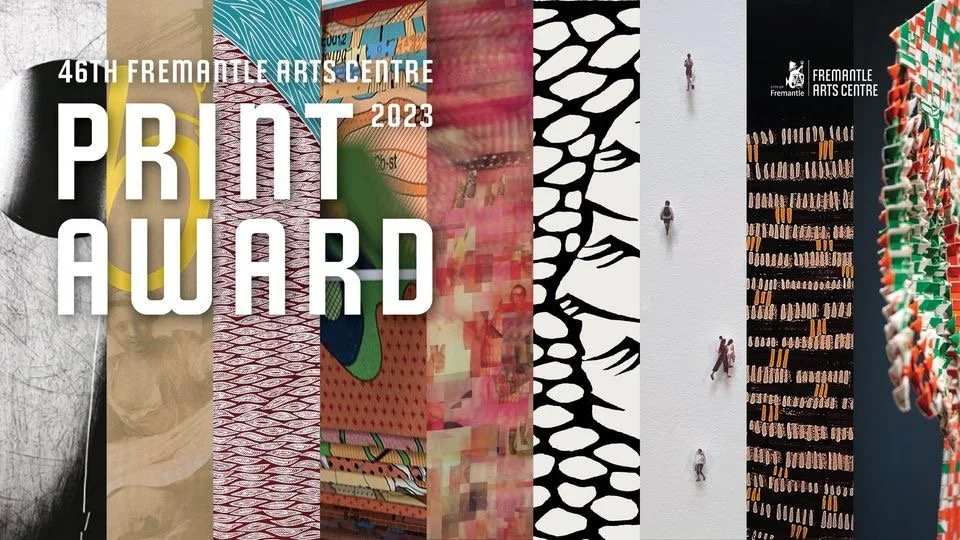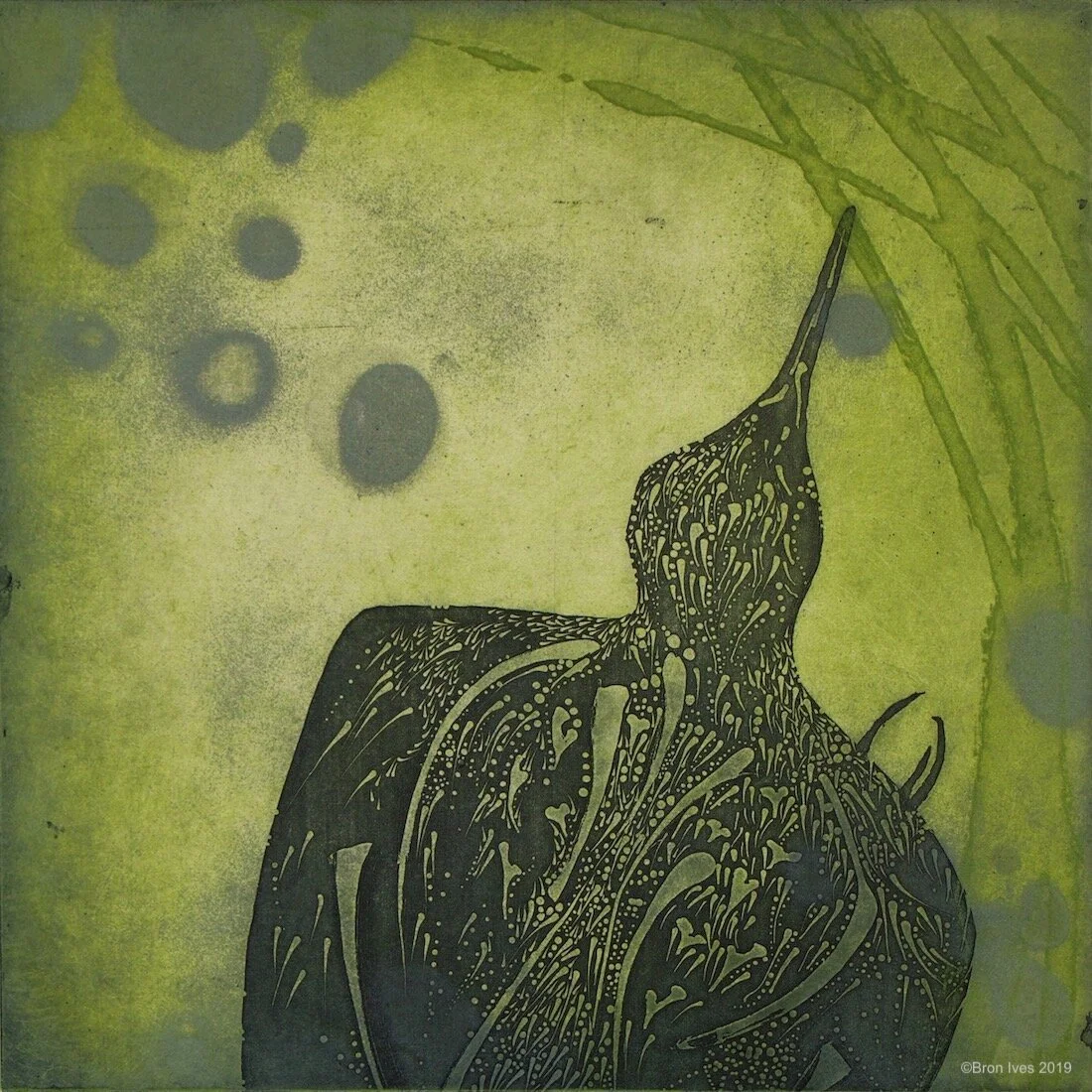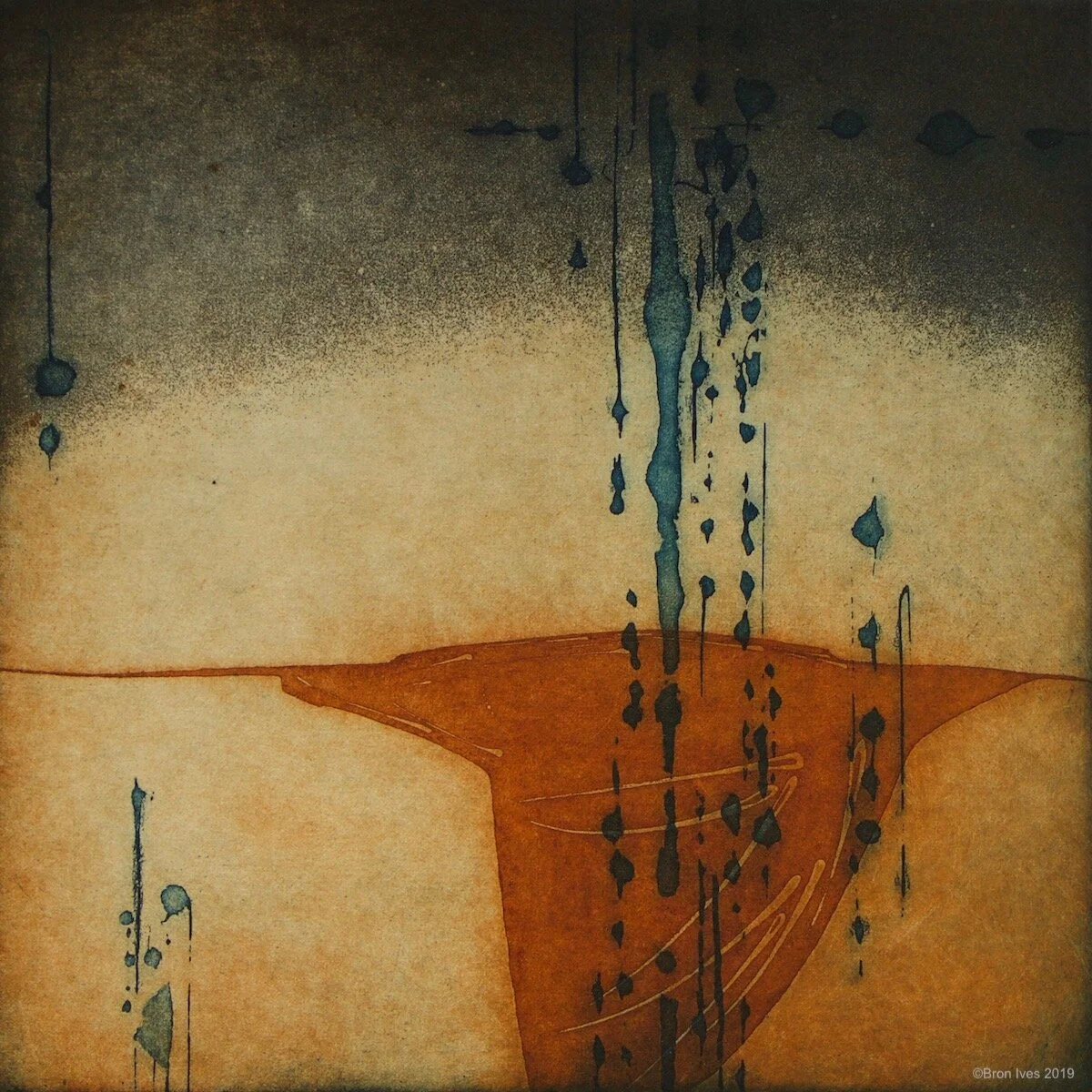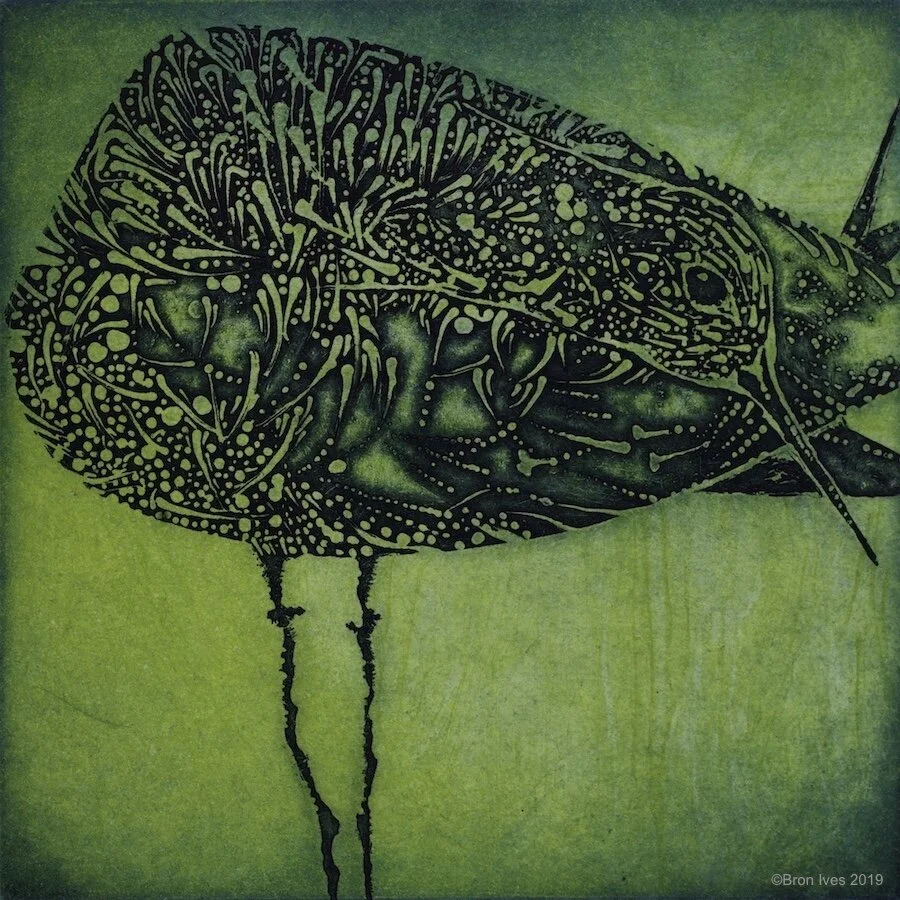Prints
The Painkalac Creek Series
For thousands of generations the Painkalac Creek and its surrounding lands, waters and creatures have been cared for by Traditional Owners: the Gadubanud People to the west, and the Wadawurrung People to the east.
Prints available through the ‘Contact’ page on this website.
Eels - Sold Out
When the night sky is darkest and the timing right, adult short-finned eels leave the creek, undulating over the sandbar, they slip silently into the ocean. Swimming deep to avoid sharks and whales, they travel back to their birthplace in the warm northern waters of the Coral Sea where they have their young - and then die. The tiny leaf-shaped larvae drift on ocean currents down the east coast of Australia, entering the Painkalac estuary over a year later as transparent glass eels. They live here for more than 20 years before repeating the epic migration.
Etching, image 39cm x 39cm, paper size 65cm x 39cm
Otway Black Snail - 1 available
Found only in the wet forests of the Otway Ranges, the source of the Painkalac, this shiny, black, carnivorous snail has long, sharp, backward pointing teeth under its ‘foot'. The spiral of its globular shell is mathematically identical to the spiral in the Milky Way galaxy and the spirals in our DNA. These endangered snails live for 2-8 years and don’t need a mate to reproduce. One catastrophic fire event and they could be extinct.
Etching, image 39cm x 39cm, paper 65cm x 39cm
Pobblebonk Tadpoles - 1 available
Pobblebonk tadpoles are large and dark with dull golden speckles on their backs. As frogs they sound like the pluck of a banjo string and as one calls, others join in, often uproariously after heavy rain. Digging burrows they emerge when it’s wet, each female laying up to 4,000 eggs. Frogs are an indication of a healthy environment yet across Australia frog populations are declining.
Etching, image 39cm x 39cm, paper size 65cm x 39cm
Ghost Moth - 1 available
Ghost Moths are ancient, appearing in fossil records that date back 100 million years. The female moth scatters eggs on the ground, the larvae feeding on roots until emerging from a partly buried shell as adult moths, often on mass after rain. Clinging to foliage and trees like the Ironbarks, they live for one day, dying after breeding.
Etching, image 39cm x 39cm, paper size 65cm x 39cm
Great Egret - Sold Out
The much-loved Great Egret that lives in the Painkalac Estuary has two nicknames - Snowy and Stretch. Highly territorial, it wades stealthily through the shallows, standing motionless before stabbing fish with its bill. Great Egrets are endangered in Victoria.
Etching, image 39cm x 39cm, paper size 65cm x 39cm
Wolf Spider - available
The female Wolf Spider carries her spiderlings deftly on her legs and body. When old enough, the spiderlings are released on fine silk threads and disperse across the landscape catching and lifting with the wind, landing to live their lives nearby or sometimes far away.
Etching, image 39cm x 39cm, paper size 65cm x 39cm
Microbat - 1 available
Microbats see with their ears, move swiftly and are rarely seen or heard. At night they become nature's pollinators, pest controllers and rock stars. These echo-locating bats are grouped as either ‘shouters’ that gracefully hunt in the open spaces of the estuary - or ‘whisperers’ that chase insects through the trees on the creek’s fringes. If we could hear the bats of the Painkalac it would be like listening to a rock concert every night.
Etching, image 39cm x 39cm, paper size 65cm x 39cm
Purple Swamphen - Sold Out
Dusky black, with a deep metallic purple-blue neck and belly, a huge bright red bill and frontal shield, the swamphen quietly struts through the shallows and mud of the sanctuary, flicking its tail feathers to reveal bright white feathers. Its strikingly long and elegant toes grasp reeds, frogs and ducklings - if it finds them.
Etching, image 39cm x 39cm, paper 65cm x 39cm
Tiger Snake - available
A slow and careful hunter, the presence of a Tiger Snake often triggers the alarm calls of nervous birds. As a capable swimmer and diver it also hunts in waterways and can remain submerged for almost 10 minutes. Tiger snakes are protected.
Etching, image 39cm x 39cm, paper size 65cm x 39cm
Echidnas - available
After hatching, the single echidna puggle settles into its mother’s pouch, until it becomes too spiny. Its mother then shifts it to a burrow. Together they forage several kilometres a day, their snouts sensing the pulsing electrical signals of ants and termites.
Etching, image 39cm x 39cm, paper size 65cm x 39cm
Poas and Roos - 2 available
Poetry in motion, kangaroos can leap six meters in a single bound - but cannot move backwards. As gentle herbivores, the Poa grasslands of the Painkalac floodplain are a preferred food but maybe it wasn’t always this way? Fossil records show they could have evolved from predecessors over two metres tall with sharp, flesh-ripping teeth.
Etching, image 39cm x 39cm, paper size 65cm x 39cm
Painkalac Creek - 1 available
The waterways and fringes of the Painkalac are intrinsic to the many plant and animal communities that live here. Together with the nearby bush, dunes, and foreshore they provide critical refuge, habitat, nurseries and corridors for common and threatened species such as the Swamp Antechinus, Broad-toothed Rat, Rufous Bristlebird, Great Egret and Hooded Plover. Aboriginal shell middens rest here. This country protects its inhabitants, including us.
Etching, image 39cm x 39cm, paper 65cm x 39cm
Swamp Antechinus - Sold Out
Swamp Antechinus are mouse-sized, insect-eating marsupials unique to South Eastern Australia. The young joeys are born when insect numbers peak during warm weather, females often giving birth all on the same day. Yet within weeks every adult male is dead, their immune systems ravaged from the frenzy to mate, they die from internal bleeding, gangrene and infections. After the 1983 Ash Wednesday fires some populations in the Otway Ranges became locally extinct - remarkably they were recently rediscovered at Painkalac Creek - more than 20 years since last recorded here.
Etching, image 39cm x 39cm, paper size 65cm x 39cm
Swamp Antechinus from the Painkalac Creek series received second prize in the Peebles Print Prize 2021. View the virtual PPP21 Exhibition here PPP21 . Thank you to Soula and Theo Mantalvanos, Queenscliff Gallery, the judges David Hurlston, Senior Curator, Australian Art NGV and Lisa Sullivan Senior Curator Geelong Gallery. The PPP21 is made possible with the generous support of: Principal sponsors: 360Q, Borough of Queenscliffe & The Streeton Family and Corporate sponsors: Oakdene Wines & 44 Frame Factory
Two Painkalac 2030 Calendars featuring all 13 Painkalac prints and 2030 dates
1/2 available 2/2 - SOLD
390mm x 870mm















